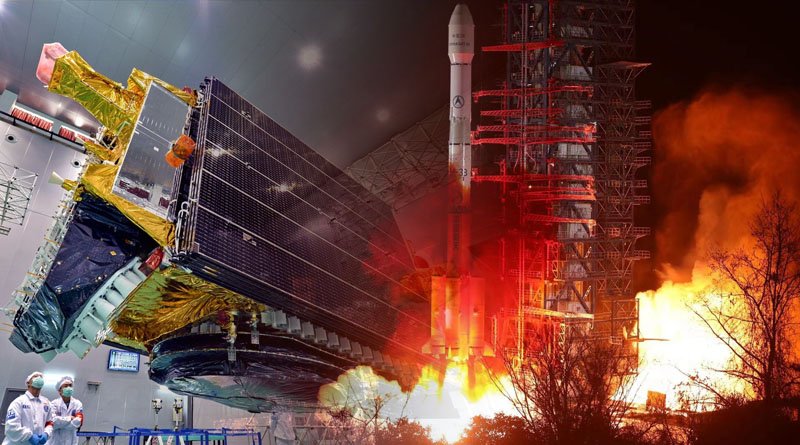Operator China Satcom describes the satellite as an important piece of national space infrastructure and helping to meet national requirements for connectivity.

Following a break for Chinese New Year, orbital launches resumed on February 23 with China’s launch of the Zhongxing-26 communications satellite.
Zhongxing-26 (ChinaSat-26) communications satellite was successfully launched into geosynchronous transfer orbit by a Long March 3B rocket at 6:49 a.m. Eastern (1149 UTC) from Xichang, southwest China (GTO).
Within an hour, the China Aerospace Science and Technology Corporation (CASC) announced the launch was successful.
Zhongxing-26 uses both chemical and electric propulsion and is based on the DFH-4E satellite bus. The China Academy of Space Technology at CASC created the country’s first satellite with a data rate of over 100 gigabits per second (Gbps) (CAST). The satellite reportedly has 94 Ka-band user beams, according to CAST.
Compared to the 2017 launch of the 26-beam, 20 Gbps Zhongxing-16, this is 3.5 times more powerful. With the aid of Viasat in-flight connectivity technology, passengers on Sichuan Airlines’ Airbus A320 flights have had connectivity thanks to that satellite.
Operator China Satcom describes the satellite as an important piece of national space infrastructure and helping to meet national requirements for connectivity.
Zhongxing-26 will mainly provide broadband access for fixed terminals and aviation in shipborne users in China and surrounding areas from 125 degrees East in the geostationary belt. The overall cost was 2.3 billion yuan ($333 million), according to a feasibility study.
It was China’s first launch since Jan. 15, when activities were suspended for the Chinese New Year. With more than 60 launches planned for 2023, this will be the fifth Long March launch this year. A total of 20 or more launches are planned by various Chinese commercial companies. The 56-meter-tall Long March 3B will launch for the first time in 2023 with this mission.
The three-stage rocket has four boosters: a third stage made of liquid hydrogen and liquid oxygen, and a hypergolic mixture of hydrazine and dinitrogen tetroxide. The workhorse of Chinese launches to GTO is the launcher. The rocket, which took off from inland at Xichang, has resulted in a number of debris incidents downrange.
The Long March 7A, billed as a greener, next-generation launcher that uses kerosene-liquid oxygen and launches from the coast at Wenchang, has yet to increase its launch rate in order to replace the ageing Long March 3B. It most recently launched a pair of classified satellites on Jan. 9.